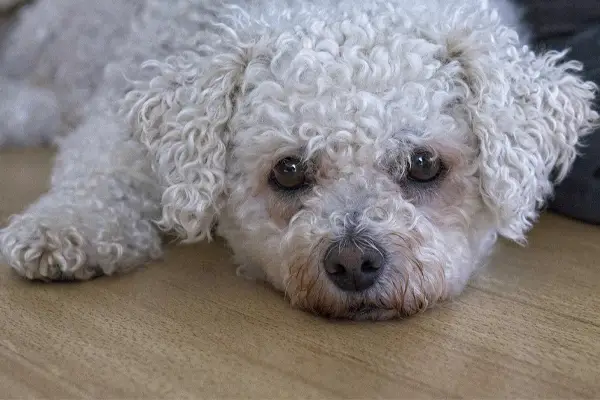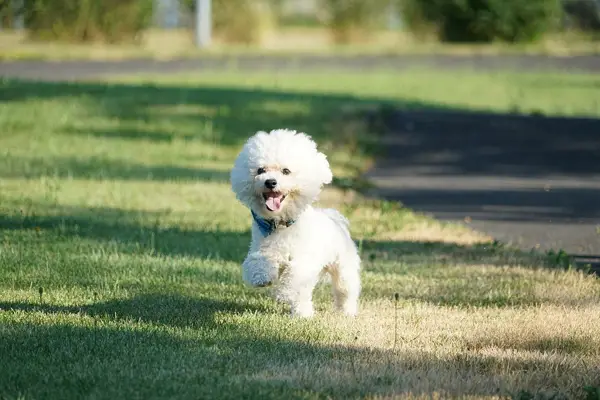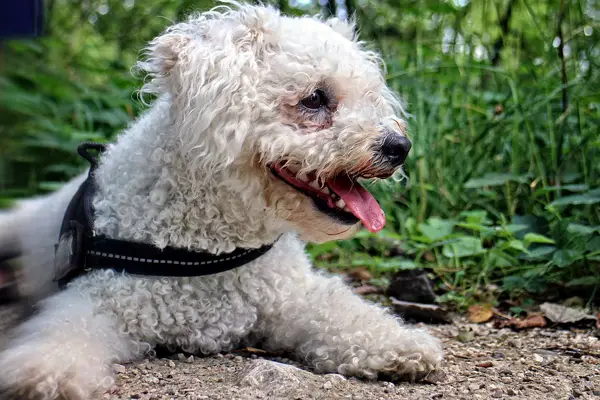The Bichon Frise is a small-sized dog breed known for his white and puffy coat. Bichons Frises have doll-like faces with dark eyes that everyone adores. Some people even mistake them as white poodles because of the resemblance.
Despite their small size, they are sturdy dogs. They also make excellent family pets even if you haven’t owned a dog before. They are playful and can get along well with children. Not to mention that they are also adaptable in any environment – whether it’s a spacious house or a small apartment.

Bichons Frises Statistics
| Dog Breed Group | Non-Sporting |
| Breed Size | Small |
| Height | 9.5-11.5 inches |
| Weight | 12-18 pounds |
| Lifespan | 14-15 years |
Bichons Frises Ratings
| Energy level | |
| Exercise needs | |
| Requires attention | |
| Playfulness | |
| Trainability | |
| Shedding | |
| Grooming | |
| Friendly with family | |
| Friendly with kids | |
| Friendly with strangers | |
| Friendly with other dogs | |
| Prey Drive |
Bichons Frises History
Bichon Frise’s origin is not clear.
Many believed that they were members of Barbichon dogs, a clan of white dogs. This breed then started producing more on Tenerife Island with the Bichon Tenerife, ancestor of the Bichon Frise, as the most popular among island’s sailors.
The very first records about the Bichon Frise began only in the 14th century. This was when French sailors brought the Bichon Tenerife to Europe.
The dogs immediately became a favorite dog breed, especially with the noblemen. Their popularity reached the royal courts of Spain, Italy, and France. Kings like King Francis I, King Henry, and even Napoleon III were so fond of the dogs.
Unfortunately, in the late 1800s, the Bichon Frise slowly decreased in popularity with the coming of the French Revolution. Their noble owners went to prison, died, and executed, leaving the dogs with almost no home. They were removed from their privileged lives.
As many of them were on the streets, circus actors have taken in most of the dogs. And during these times, people have considered it an ordinary dog. If not for the breed’s appeal, they would have gone extinct during these times.
When World War I was over, French breeders gained interest in the breed again. They started working on preserving the breed, and by 1933, the Societe Centrale Canine of France adopted the official breed standard.
By 1956, the Bichon Frise was brought to the US, but it wasn’t until 1972 when the American Kennel Club registered the breed.

Bichons Frises Temperament
The Bichon Frise is generally playful, curious, and vigorous. In other words, they are surrounded by this bubble of cheerfulness that surely anyone adores.
They are very easy to live with, even if you’re a first-time dog owner. All you need to remember is that these dogs love playing games, snuggling into laps and pillows, cuddles, and looking out the window.
The only problem is that he can’t be left alone for long periods. So if you’re out often, then the Bichon Frise might not be a great choice as he gets separation anxiety. His destructive behavior might also show up because of this.
They love people, and they can be very friendly, even with strangers and other animals. If you have kids, you also don’t need to worry about it too much because they’re also good with kids. But of course, you still need to supervise.
As highly intelligent dogs, they are easy to train. He responds better when there’s food, so treats are something you can offer as a reward. Remember to be patient in handling him and never approach with harshness.
Early socialization is crucial even for the nicest dogs. Make sure to socialize them early with strangers, other animals, and new sights and sounds. It’s also nice if you meet the parents, so you know what temperaments to expect.
Bichons Frises Care Requirements
- Nutrition: Although a small dog, the Bichon Frise is very playful and active. They require a high-quality meal that contains all the essential nutrients. It is also best to take note of their daily calorie intake as they can get overweight quickly. On average, an active Bichon Frise should require between 404-663 calories per day, while 296-495 calories per day should be enough for an inactive Bichon Frise. This can also depend on your dog’s age. The right well-balanced diet should contain protein as the main ingredient. This can either be poultry, fish, or beef. You can then add whole grains such as brown rice for the carbohydrate source. Fish and vegetable oils are excellent sources of fats, while fruits and vegetables are best in providing fiber. Stay away from food that has very little to no nutritional content. This includes artificial flavoring or coloring, by-products, and fillers.
- Grooming: The Bichon Frise doesn’t shed a lot; however, you should brush its coat at least 2-3 times a week. If you can do it every day, the better. This will help maintain her coat in its healthy condition and prevent mats from forming. They also need a bath at least once a month. Their hair would also need some trimming. If you are not confident about doing this on your own, you should take him to an expert groomer every 4-6 weeks. Check and trim the nails often too. It’s painful for dogs to walk if they have very long nails.
- Exercise: Bichon Frise is a somewhat active breed. They usually love to stretch and lie in the house, but they can get very excited and start running around the house. Daily play sessions or walks will lower a Bichon Frise’ energy. It would also be great if you have a fenced yard where you can have him run around. But of course, always keep an eye on this little man.
- Health: Bichon Frise is a generally healthy breed with a long lifespan. However, they, too, are prone to some health issues. Some of the serious ones are hyperadrenocorticism, allergies, and patellar luxation. They can also experience some less serious conditions such as cataracts, canine hip dysplasia, Legg-Perthes, and liver disease. For some diseases, examinations can be done for early detection. You can also check with the parents for any history of genetic health conditions that you should be aware of.
- Lifespan: The life expectancy of Bichon Frises is 14-15 years.

Famous Bichon Frises
- Sammy: Barbara Streisand’s Bichon companion
- Oliver: Rescued Bichon Frise of Candyce J. Corocan
- Ringo: Bichon Frise owned by Sadie Frost
Fun Facts About Bichon Frises
- They originated in Spain, even if most people believed they were from France.
- Their name means “Curly Lap Dog”; Frise is a french term for curly, while a Bichon is a lap dog.
- They grew popular as entertainers in the 19th century.
- They came to the United States in 1955.
- Famous painters love them as models; this includes a painting from 1819 titled “Las Jóvenes o la Carta.”
- They have hypoallergenic coats.
- Bichon Frises hate water.
Check Out Other Non-Sporting Dog Breeds:
American Eskimo Dog, Boston Terrier, Bulldog, Chinese Shar-Pei, Chow Chow, Coton de Tulear, Dalmatian, Finnish Spitz, Keeshonden, Lhasa Apsos, Lowchen, Norwegian Lundehund, Schipperkes, Shiba Inu, Tibetan Spaniel, Tibetan Terrier, Xoloitzcuintli
